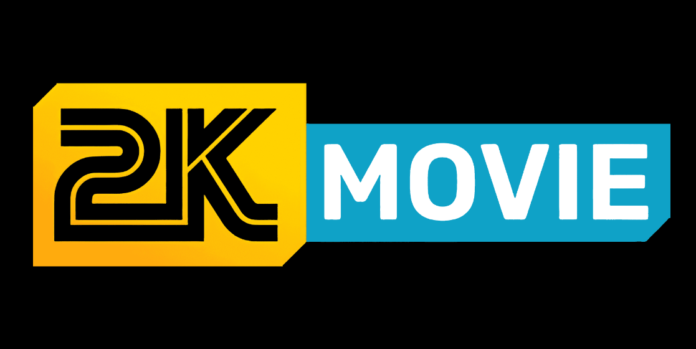“2K Movie CC” probably refers to a 2K quality movie with closed captioning. This study examines the value of closed captioning (CC) and 2K resolution in the film industry and how these two elements work together to improve the viewing experience for different audiences. Take a comprehensive look at the capabilities of 2K Movie CC in modern cinema and examine technology advancements, accessibility benefits and industry trends.
Table of Contents
Understanding 2K Resolution
A display resolution that is 2,000 pixels wide is called 2,000 pixels. When talking about movies, 2K usually means 2,048 x 1,080 pixels, which is a significant improvement in image quality over regular high-definition (HD) codecs. A more immersive viewing experience, finer details and sharper images are all possible with this higher resolution.
Historical Context
In the early 21st century, the film industry began the transition from film to digital, and 2K resolution quickly became the norm. In an effort to standardize the delivery and quality of digital movies, the Digital Cinema Initiative (DCI) has established requirements for 2K and 4K digital cinema. The adoption of 2K resolution was a major innovation that enabled easy distribution and consistent quality across multiple locations.
Technical Advantages
2k movie cc resolution offers several advantages:
- Improved image quality: 2K film has a higher pixel count, providing sharper, more detailed images and an overall viewing experience.
- Efficient storage and distribution: 2K files are smaller than 4K files, making them easier to store, transfer and stream without significantly sacrificing quality.
- Compatibility: The majority of modern digital displays and projectors offer 2K resolution, ensuring wide reach and compatibility.
The Role of Closed Captions (CC)
Closed captioning uses the text that appears on the screen when you need additional or explanatory information. It includes audio cues such as sound effects, dialogue, and speaker recognition. Captioning (CC) is essential to making your content accessible to a wider audience, including those who are deaf or hard of hearing.
Historical Development
Closed captioning was first introduced in the early 1970s, primarily for television. Since then, the technology has evolved and is now a standard component of digital media such as DVDs, streaming services, and movie theaters. The legal environment is also changing. In the United States, laws such as the Americans with Disabilities Act (ADA) require accessible features in public media.
Benefits of Closed Captions
The inclusion of closed captions offers numerous benefits:
- Accessible: Ensures that the hearing impaired can fully understand and watch the film.
- Learning a language helps non-native speakers understand conversations and improve their language skills.
- Comprehension: Help your audience understand complex speech, regional dialects, or specific terms.
- Versatility: Watch in noisy environments where audio is hard to hear.
The Synergy of 2K Resolution and Closed Captions
2K resolution combined with closed captioning is a powerful tool to enhance your movie experience (2K Movie CC). Clear, easy-to-read captions combined with high-definition footage ensure that all audiences are fully immersed in your content.
Enhanced Viewing Experience
Closed captions are easier to read and less noticeable when presented at 2k movie cc resolution. The high quality of the images means that the subtitles do not detract from the visual experience, allowing the audience to focus on the details of the film without having to focus on it.
Inclusivity and Accessibility
2K Movie CC promotes diversity by making movies available to everyone, regardless of listening ability. This is especially important in places where content is viewed by multiple users, such as public theaters, classrooms, and streaming services.
Industry Trends and Innovations
The film industry is at the forefront of innovation when it comes to accessibility and solutions. Here are some notable developments and trends.
4K and Beyond
While 2K resolution is the standard, 4K and 8K resolutions are becoming more popular. These high-resolution images can show even greater clarity and detail. Still, 2K is preferred, especially by independent and smaller theaters, because of its combination of practicality and quality.
Advanced Captioning Technologies
Thanks to new technology, closed captioning is becoming easier and better quality. AI-powered speech recognition and natural language processing make it easy to create accurate and contextual headlines. Viewers can also change the font size, color and position using the adjustable caption settings. It improves readability and personalization.
Streaming Services
The growth of 2K movie CC is heavily influenced by streaming services. Services like Netflix, Amazon Prime, and Disney+ have an extensive collection of 2K videos with closed captions available that cater to a worldwide audience and promote accessibility. To further enhance your viewing experience, these platforms also take advantage of adaptive streaming technology that ensures seamless playback regardless of your internet connection.
Legislative and Advocacy Efforts
Legislators and advocacy groups continue to work to improve media access. Current regulations require all new content to include high-quality closed captioning, and existing libraries are being modified to comply with these requirements. This ongoing effort ensures that the entertainment industry continues to prioritize accessibility.
Challenges and Considerations
Despite progress, barriers to widespread integration and implementation of 2K Movie CC remain.
Technical Limitations
2k movie cc resolution may not be accessible to some viewers as not all devices and theaters support 2K resolution. Additionally, producing high-quality closed captions requires time, experience and resources, which can be a burden for smaller production companies.
Quality Control
It is important to ensure accuracy and excellence in closed captioning. Inaccurate, poor, or out-of-time subtitles can ruin your viewing experience and prevent you from realizing the benefits of accessibility you want.
Cultural and Linguistic Variability
Creating linguistically and culturally appropriate closed captioning for a variety of audiences is difficult. Localization efforts should consider regional dialects, colloquialisms, and cultural genres to ensure that subtitles are appropriate and easy to understand.
2K Movie CC Conclusion
2K Movie CC represents a major step forward in making movies more welcoming and enjoyable for all viewers. Filmmakers can reach a wider audience by combining the accessibility of closed captioning with the clarity and detail of 2K quality. This includes language learners, the hearing impaired, and anyone who would benefit from better understanding.
As technology advances, better captioning technology and resolution will be added to further enhance the movie experience. The benefits of 2K Movie CC will continue to grow with continued access efforts supported by industry development and legislative efforts. It creates a more engaging and inclusive future for cinema.




